
The East Suffolk line is an un-electrified 49-mile secondary railway line running between Ipswich and Lowestoft in Suffolk, England. The traffic along the route consists of passenger services operated by Greater Anglia, while nuclear flask trains for the Sizewell nuclear power stations are operated by Direct Rail Services.

Reedham railway station is on the Wherry Lines in the East of England, serving the village of Reedham, Norfolk. It is 12 miles 13 chains (19.6 km) down the line from Norwich and is situated between Cantley to the west and, to the east, Berney Arms on the Great Yarmouth branch or Haddiscoe on the Lowestoft branch. It is commonly suffixed as Reedham (Norfolk) in order to distinguish it from the station of the same name in south London. Its three-letter station code is REE.
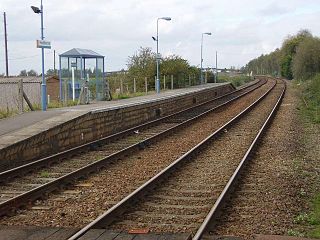
Haddiscoe railway station is on the Wherry Lines in Norfolk, England, named after the village of Haddiscoe, some 2 miles (3.2 km) distant, although the village of St Olaves on the other side of the River Waveney is closer. It is 16 miles 11 chains (26.0 km) down the line from Norwich on the route to Lowestoft and is situated between Reedham and Somerleyton. Its three-letter station code is HAD.

The fishing port and holiday resort of Cromer in the English county of Norfolk has had a rail service since 1877. It was served by three railway stations for many years, and is now served by two. Cromer Beach station, which opened in 1887, was renamed Cromer following the closure of the other early stations.
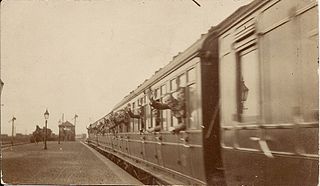
Caister-on-Sea railway station is a former railway station in Norfolk, England. It was opened in 1877. It later became part of the Midland and Great Northern Joint Railway route from Birmingham to Great Yarmouth, predominantly used by holidaymakers. The station was a few miles north of the terminus at Yarmouth Beach railway station. The station closed with the rest of the line in 1959. The station was demolished after closure and houses now cover the site.
Hopton-on-Sea was a railway station serving the village of Hopton-on-Sea in Norfolk on the Norfolk and Suffolk Joint Railway line between Great Yarmouth and Lowestoft. It opened in 1903 and closed in 1970.

Flordon railway station was a station in Flordon, Norfolk. It opened in 1849 when the line from London to Norwich was constructed. It was closed in 1966 as part of the Beeching Axe.
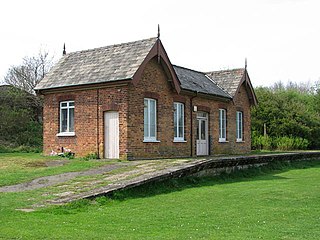
Corpusty and Saxthorpe railway station was a railway station in North Norfolk. It was opened by the Eastern & Midlands Railway as a stop on their route between Melton Constable and Great Yarmouth. It was closed in 1959. It served the villages of Corpusty and Saxthorpe, neither of which has a rail link today.
Aylsham North railway station was a station in Aylsham, Norfolk on the Midland and Great Northern Joint Railway line from the Midlands to the Norfolk coast. It was closed in 1959, along with the rest of the line. The station was demolished following its closure and is now a car park for the Weavers Way; this footpath follows the old trackbed to Yarmouth.

Stanhoe was a railway station which served the village of Stanhoe in Norfolk, England. Opened by the West Norfolk Junction Railway in 1866, it closed to passengers in 1952.

Yarmouth South Town, sometimes known as Yarmouth Southtown, was a railway station in Great Yarmouth, England, that is now closed. It was one of three major stations in the town, the others being Yarmouth Vauxhall and Yarmouth Beach, of which only Yarmouth Vauxhall now remains.
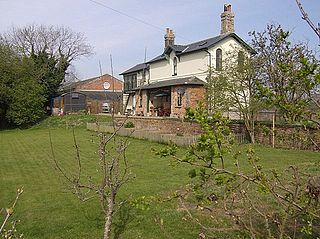
Geldeston was a station in Geldeston, Norfolk – a station on the Waveney Valley Line. It was opened in the early 1860s, and closed to passengers nearly a century later in 1953. It was the penultimate station on the line, and the last in Norfolk as the line crossed the border into Suffolk before the junction station of Beccles. The station still exists today and can easily be found in Geldeston.
Boyces Bridge railway station was a station in Norfolk on the Wisbech and Upwell Tramway commonly known as the Upwell Tramway. It was located north of Outwell. It was opened in 1883 along with the rest of the line, and closed to passengers in 1928 and goods in 1966.

Bluestone railway station was a station in Norfolk, England. It was on the Midland and Great Northern Joint Railway between Corpusty and Aylsham North. It opened in the late 19th century, to serve the surrounding farms and settlements, and closed in 1916 owing to poor use.
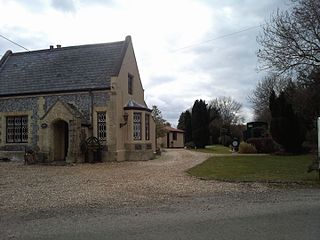
Fransham railway station is a former station in Great Fransham, Norfolk. It was opened as part of the Lynn and Dereham Railway, becoming part of the East Anglian Railway from 1847, on the section of line between Dereham and Swaffham.
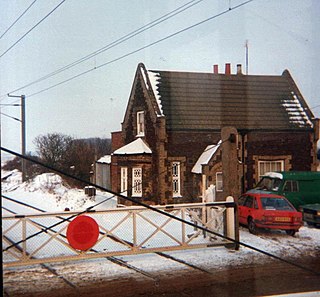
Stow Bardolph railway station, in the parish of Stow Bardolph, Norfolk, served the villages of Stow Bardolph and Stowbridge. It closed in 1963.

Haddiscoe High Level was a railway station in Haddiscoe, Norfolk serving the now closed Yarmouth-Beccles Line. It obtained its name due to its close proximity to Haddiscoe railway station which served the Wherry Lines. The station was closed in 1959 at the same time as the line it served.
The Yarmouth–Beccles line was a railway line which linked the Suffolk market town of Beccles with the Norfolk coastal resort of Yarmouth. Forming part of the East Suffolk Railway, the line was opened in 1859 and closed 100 years later in 1959.

The Norfolk Railway was an early railway company that controlled a network of 94 miles around Norwich, England. It was formed in 1845 by the amalgamation of the Yarmouth and Norwich Railway opened in 1844, and the Norwich and Brandon Railway, not yet opened. These lines were built out of frustration that the Eastern Counties Railway line that was expected to connect Norwich to London failed to be completed. The Norfolk Railway also leased the Lowestoft Railway and Harbour company, and built a branch to Dereham and Fakenham, opened in 1846 and 1849 respectively.
The East Suffolk line is a railway in East Anglia with a long history.















